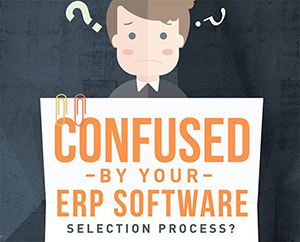Implementing SAP B1
and Reduce Time and Investment
The team at Leverage technologies has implemented more than 200 SAP Business One (SAP B1) sites over the past ten years. A question I am often asked is “how can I reduce the upfront costs to implement SAP B1?” SAP B1 is designed specifically for small to medium sized business. Let’s explore some areas of implementation that can be reduced through effective internal management and team effort:
- Data conversion – you can help reduce the costs associated with data conversion by making sure you provide your SAP Business One implementation team with good, clean data. Get data ready for conversion by cleaning up existing data and providing data in the format that is requested by your SAP Business One implementation partner. This data will need to be ready for upload using the SAP Business One Data Transfer Workbench (DTW) templates. Your SAP Business One implementation partner can provide you with the templates and can provide basic training for your super users.
- Project Management – provide help to the implementation partner project manager by providing an internal, part time, project manager to streamline your implementation. Your internal project manager can take responsibility for project minutes, team updates, co-ordination of team schedules and co-ordination between your internal team and the SAP Business One implementation partner team.
- Forms – get a super user within your organisation to attend forms editing training and consider letting an internal user modify your print and on screen forms. Forms like your invoice, purchase order and remittance layout. This newly acquired skillset has an added advantage – you will be able to do your own maintenance of forms. As your requirements change you will be able to do your own forms modifications.
- Screen layouts – fits into a similar category to the changing of print forms mentioned above. SAP Business One has a great GUI Forms editor which makes for really easy forms editing.
- User Acceptance testing – get your team involved in user acceptance testing. Nobody knows and understands your data as well as you do. Get involved in testing the new system – it will save you time, money and will result in a smoother transition at go live.
- Report writing – an area usually reserved for the more technical super users with some MS SQL or equivalent skills. Get a technical user trained in report writing.
- Queries – SAP Business One offers great query writing capabilities – available to even the non-technical user. Get your super users trained in using the SAP Business One Query Generator and the “view system functionality” to enable users to create basic report queries.
- User defined fields – creating user defined fields and tables in SAP Business One is a simple process. Give a super user access to the creation of user defined fields so that you can add and maintain your own fields and tables.
- Train the trainer – provide comprehensive training to your super users and then schedule the super users to train the rest of the team.

Implementing SAP B1 can be accomplished in a relatively short time frame – the above mentioned tips will help you and your team further expedite the implementation process by taking ownership of the management of your new SAP B1 solution.








Leave A Comment